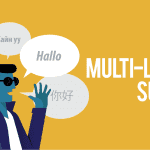Price Localization: When Selling in Global Markets, Goes Beyond Currency

Hidekazu Tojo, the inventor of the California roll, moved to Vancouver in 1971 at a time when there were only four Japanese restaurants. He noticed that folks from the Western world were not huge fans of raw fish, and did not particularly like seaweed as well.
Tojo, then decided to reinvent the traditional sushi by preparing those rolls inside out, hiding the seaweed and the smell of raw fish in layers of flavor. And thus was born the California roll, which was an instant hit among the North Americans as it appealed to the local palate.
The Japanese revere their food culture and much has been written about the science and art behind their culinary practice. That is why, the metamorphosis of the time honored sushi into the Californian roll, is considered to be a revolution of sorts and a true example of localization.
This kind of cross-border influence happens when trade barriers fall, and businesses become more and more global. Everything about the products and/or services, including the way it is built, marketed, sold and priced, are localized to suit the local tastes and needs.
Let’s talk about price localization, the ignored sibling in the famed family of “Global Expansion”.
What’s True and What’s Cosmetic?
What is price localization, really? Simply, it is tailoring the price of a commodity, a product or a service to suit an international market, including the currency type.
But isn’t $ a universally accepted currency? Why should you bother converting to native currencies?
An interesting conversation on HackerNews, which consisted of a poll on billing and currency choices, posed a similar question – “would you buy a service that bills only in €?” (Psst! This conversation is more than 5 years old, but the issues are still relevant).
And some of the answers in the thread offer us a preview into the minds of global SaaS practitioners and why showing foreign currency can have a negative impact on a buyer’s purchase decisions. One of them was –
If it’s a recurring purchase, I like predictability. Unfortunately, the exchange rates change, and so what I get billed each month will change. This isn’t a huge deal, but I like to glance at my statements, immediately ignore things I know about, and look for anomalies.
Buyers are hardwired to convert the price of a product into their native currency to see how much it is actually going to cost them.
Patrick Campbell of Price Intelligently writes in his blog on the need for SaaS pricing localization, “Localizing your pricing comes in two flavors: 1. Cosmetic changes where you simply convert your price to the local currency, and 2. True localization where you actually charge differently in different markets.”
You could adopt cosmetic localization. Or you could listen to what Feynman said about the Brown Throated Thrush and apply it to true localization.
“The next Monday, when the fathers were all back at work, we kids were playing in a field. One kid says to me, “See that bird? What kind of bird is that?” I said, “I haven’t the slightest idea what kind of a bird it is.” He says, “It’s a brown-throated thrush. Your father doesn’t teach you anything!” But it was the opposite. He had already taught me: “See that bird?” he says. “It’s a Spencer’s warbler.” (I knew he didn’t know the real name.) “Well, in Italian, it’s a Chutto Lapittida. In Portuguese, it’s a Bom da Peida. In Chinese, it’s a Chung-long-tah, and in Japanese, it’s a Katano Tekeda. You can know the name of that bird in all the languages of the world, but when you’re finished, you’ll know absolutely nothing whatever about the bird. You’ll only know about humans in different places, and what they call the bird. So let’s look at the bird and see what it’s doing—that’s what counts.” – Richard Feynman

A renowned theoretical physicist and a master raconteur, Feynman is known to impart lessons in his stories. He talks about knowing the name of the bird as opposed to knowing about the bird, where he says that it doesn’t matter if you don’t remember the name of something, as long as you know and understand what it does.
Understanding a market deeply applies to true localization. It includes reading into how customers in that geography view the software, how much they are willing to pay for it. Every country has a unique buying culture and different payment preferences.
You may know that you will need to sell in Chinese Yuan for your Chinese audience, or Japanese Yen for your customers in Japan, and so on. But it does not matter if you do not understand how your customers in China or Japan or anywhere else perceive the value of your product.
True price localization can be explained by the simple and oft cited example of the price of a Big Mac. Say, McDonald’s sells the same juicy, delicious hamburger in United States, Switzerland, Egypt, China and North Korea. Notice anything?
Apart from the predictable surge of cholesterol levels, and the absence of a North Korean outlet, you’ll notice another obvious thing, the prices vary.
An inquiry into these variations leads one to the door of Burgernomics, thanks to The Economist’s Big Mac Index.
Understanding Burgernomics And Evernote’s International Expansion
Our non-economist brains dug around to understand the theory behind the Index.
The Big Mac Index is The Economist’s attempt at dumbing down the idea of measuring the Purchasing Power Parity (PPP) between different nations and currencies, using the popular hamburger, the Big Mac, as a benchmark.
The purchasing power parity in any country is determined based on factors such as cost of living and inflation rates.
The Big Mac Index seeks to make the exchange rate theory easy to consume, and dictates that, overtime, the exchange rates should adjust such that the same product or service will cost the same, in the two countries.
And if they don’t cost the same, it means that one country’s currency is overvalued or undervalued over that of the other country.
Let’s break down the math. There are 36899 McDonald’s restaurants globally. And almost all the restaurants across different markets sell the same Big Mac with the same ingredients and same method of preparation, but at different prices.
A Big Mac that costs $5.06 in the US, costs £3.09 in the UK (which converts to $3.79 according to current market exchange rates). The difference, then, is $1.27.
This means, you can consume 19.7% of a Big Mac for $1 in the US, and 26.3% of the same Big Mac for £1 in the UK. Simply put, the purchasing power of the UK is greater than that of the US, and you get to eat more Big Mac for a unit currency in the UK.
Then, according to the Raw Index, the UK British Pound is undervalued against the US Dollar by 25%. Implied exchange rate as per the index is 0.61, whereas the actual exchange rate as of today is 0.82.
The index by itself is not entirely perfect, because of factors such as the price of the Big Mac being decided privately by McDonald’s, or the varying demand for Big Mac in different countries, the labor costs, or even the need for having different goods at same prices across countries.
Yet, the index has become the global standard to understand exchange rates across countries.
We recently introduced Multi-currency pricing support, which builds the case for localization, and takes businesses one step closer to going global. We decided to decode true price localization by studying one of the earliest pioneers Evernote.
We analysed the price of Evernote Premium across different countries, and replicated the Big Mac Index Charts. And not surprisingly, we found a staggering difference in how it is priced in each country.
The table below lists the price of Evernote Premium in different countries:


So it all comes down to two simple questions – How much, is a customer in a specific market, willing to pay for the service? How is a customer willing to pay for the service?
This means decoding the purchasing power in a specific market. This also means allowing your customers to pay with their native currency.
ChenLi Wang, who headed the international expansion of Dropbox, highlights the need for supporting local currencies while addressing perception bias. He says, “With payments you have a few things, one is local currency. This goes back to perception once again. It makes a pretty big difference from a perception standpoint when you can charge customers in the local currency versus in US dollars.”
The pricing and the currency type affects your customers’ perceptions, irrespective of where they are. And how the customers perceive the price is as important as the price itself.
These perceptions are important when you want to earn the trust of your customer, from every corner of the world.
Of those who tried true price localization
Consumer segments are getting diverse – in terms of ethnicity, lifestyle, wealth, affordability, and values.
When considering true price localization for a specific market, it is not just the currency that needs to be taken into consideration. One of the significant factors is being sensitive to PPP and consumers’ preferences – as was seen in the case of Netflix and Amazon Prime’s entry into the Indian market.
Netflix expanded internationally across 190 countries in early 2016, with about 81.5 million users, of which 42% belong to the international segment (outside the USA).
Clearly, India made sense, considering it’s one of the fastest growing internet economies with the user base expected to grow close to 730 million by 2020 from the 277 million in 2016, according to a NASSCOM report.

Yet, when they entered India, competing against the native, Hotstar, their target market was well defined. “[Right now] the users are English speaking, iPhone toting, and credit card holding. We are not a mass service”, said Jonathan Friedland, Chief Communications Officer for Netflix. The target audience also contradicted with 75% of new Internet user growth from rural areas.
On the other hand, Amazon Prime understood the price sensitive Indians, and tapped into two of their favorite industries with partnerships – Bollywood and Cricket.
While Netflix’s premium plan is priced at Rs. 800 (~12 USD per month), Amazon Prime offered a free trial, and the a discount of Rs.500 against the full price of Rs. 999 for the one-year Prime membership at Rs.499 (~1.2 USD per month).
It’s easy to guess the real winner here. At least, for now. You can find Abhishek Madhavan’s elaborate analysis of why Netflix is losing the battle to Amazon Prime in India, here.
Pricing must be elastic. Locally as well as internationally. And elasticity must apply not only to the pricing, but also to the value.
Catering to the Homo Economicus and Humans
A homo economicus is a hyper rational person, who rationalizes cost and benefits of something logically while making decisions.
But humans function at a much deeper level than the ideal Homo Economicus. For them, perceived value of a product goes beyond cost and benefits, and demand and supply and can be derived from intangible parameters that are emotional and idiosyncratic, if anything.
Your pricing should cater to both the rational and irrational, the Homo Economicus, who carefully weighs his decisions and the Human, who can make snap judgements. And so you need to dig deeper into the market, to truly understand the market.
Localization can be pretty daunting and the complexity can be overwhelming. Even with enriched data, it’d be difficult to localize or customize every component of a business based on the locale. The spiraling costs in doing so, could paralyze any attempt to go global.
Starting with simple cosmetic localization and slowly progressing to true localization could help in not only tapping into revenues from foreign markets, but earning the trust of your customers from literally anywhere.


